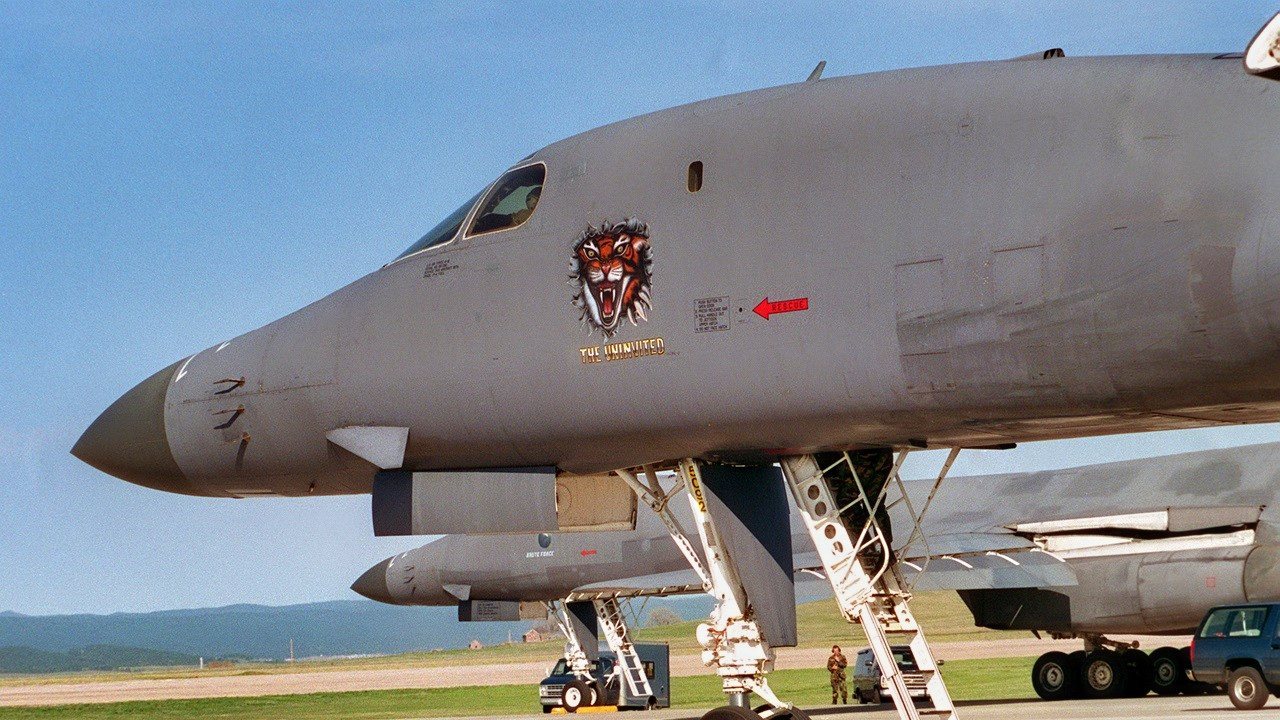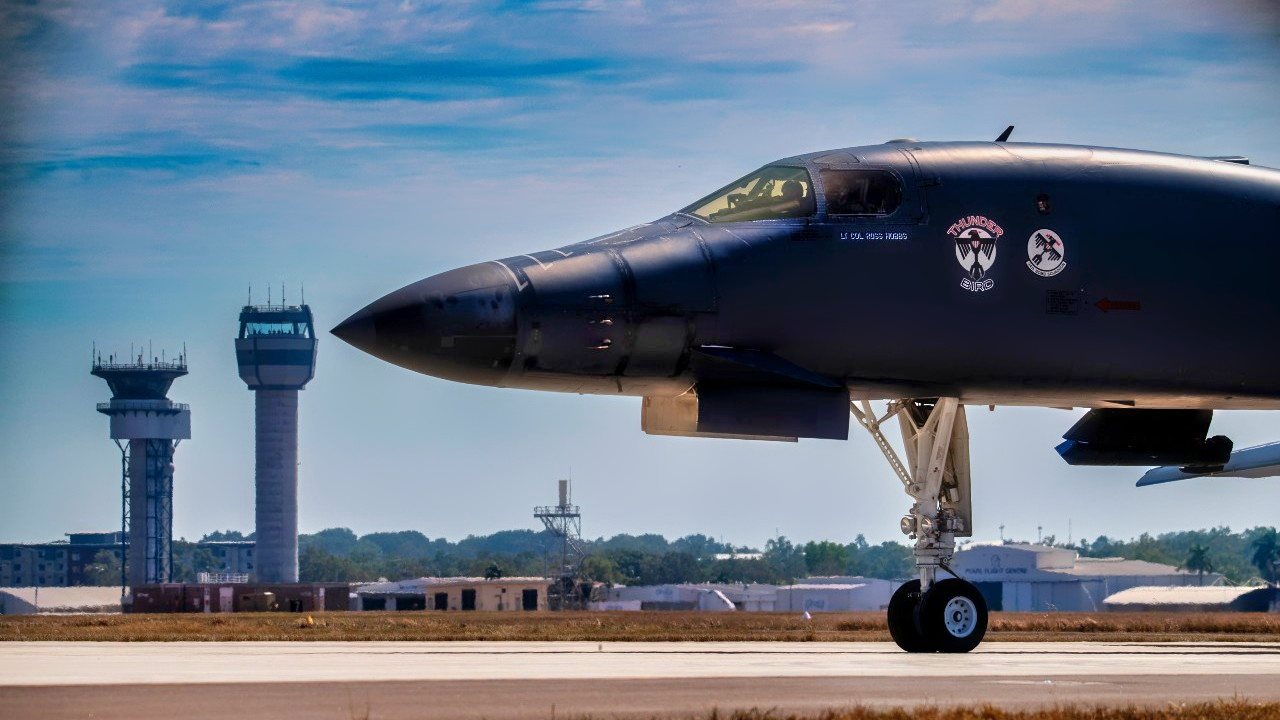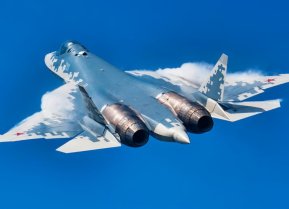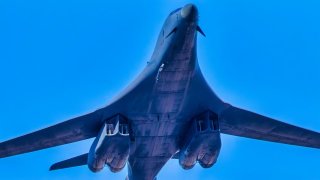Forget Retirement: The Air Force's B-1 Lancer Bomber Is Everywhere
The B-1 supersonic bomber first entered service in the mid-1980s. It continues to be used to support the U.S. bomber presence in the Asia-Pacific region and to conduct close air support missions in U.S. operations around the world. Since the end of the Cold War, it does not carry nuclear weapons.
B-1 Lancers Took Part in CONUS-to-CONUS Mission - Less than a month after a United States Air Force B-1 Lancer bomber crashed during a training flight at Ellsworth Air Force Base (AFB), South Dakota, two of the Cold War-era long-range bombers took part in retaliatory strikes against Iranian-backed militias in Iraq and Syria last Friday.
The Air Force has released a video of B1-Bs making a nighttime departure from Dyess AFB, Texas, which included aircraft from the 28th Bomb Wing that had been relocated from Ellsworth as the crash investigation continues.
However, it has very much been business as usual as Ellsworth and Dyess B-1 crews routinely conduct long-duration CONUS-to-CONUS missions – taking off and returning to the same base in a single flight – as a part of strategic Bomber Task Force missions undertaken by Air Force Global Strike Command across the globe. Such missions are designed to develop the ability to operate from various locations and integrate with allies and partners at any time and from anywhere.
"Our Airmen demonstrated once again our ability to conduct long range precision strike missions when tasked to do so," said Col. Derek Oakley, 28th Bomb Wing commander. "Teaming with our fellow Strikers at Dyess to accomplish the mission is a testament to what we are able to do while further enhancing interoperability and improving our collective readiness."
Last week's CONUS-to-CONUS mission also validated the fact that the bomb wing can still respond to any threat anywhere on the globe.
All of the units involved have become familiar with operations in different regions because of the BTF missions we have done," Oakley continued. "We continuously train and prepare for these types of situations and we are always ready to answer the call when it comes."
The Unstoppable B-1 Lancer
The B-1 supersonic bomber first entered service in the mid-1980s. It continues to be used to support the U.S. bomber presence in the Asia-Pacific region and to conduct close air support missions in U.S. operations around the world. Since the end of the Cold War, it does not carry nuclear weapons.

The B-1 has a blended wing body configuration, with a variable-sweep wing, four turbofan engines, triangular ride-control fins, and a cruciform tail. The wings can sweep from 15 to 67.5 degrees (full forward to full sweep). Forward-swept wing settings are used for takeoff, landings, and high-altitude economical cruise. Aft-swept wing settings are used in high subsonic and supersonic flight.
A total of 104 were originally built, yet fewer than 60 remain in service today. The bombers are stationed at Dyess AFB, Texas, and Ellsworth AFB.
U.S. Strikes Back
Friday's strikes came days after three U.S. Army reservists were killed in a drone attack at a remote U.S. base in Jordan. U.S. Central Command (CENTCOM) said its military forces struck more than 85 targets in the two countries with numerous aircraft including the long-range bombers flown from the United States. The air strikes employed more than 125 precision munitions.
"Iran's Islamic Revolutionary Guards Corps (IRGC), Quds Force and affiliated militia groups continue to represent a direct threat to the stability of Iraq, the region, and the safety of Americans. We will continue to take action, do whatever is necessary to protect our people, and hold those responsible who threaten their safety," said Gen. Michael Erik Kurilla, CENTCOM commander.

The Islamic Resistance in Iraq, a coalition of Iran-linked groups, claimed responsibility for the drone attack. However, Tehran has denied directing the attack, saying the groups act on their own.
Author Experience and Expertise: Peter Suciu
Peter Suciu is a Michigan-based writer. He has contributed to more than four dozen magazines, newspapers, and websites with over 3,200 published pieces over a twenty-year career in journalism. He regularly writes about military hardware, firearms history, cybersecurity, politics, and international affairs. Peter is also a Contributing Writer for Forbes and Clearance Jobs. You can follow him on Twitter: @PeterSuciu. You can email the author: [email protected].


